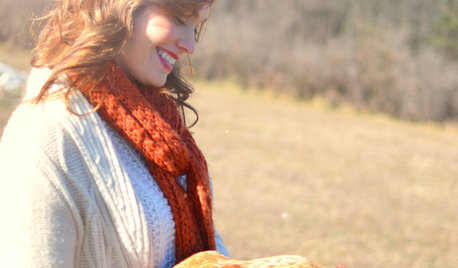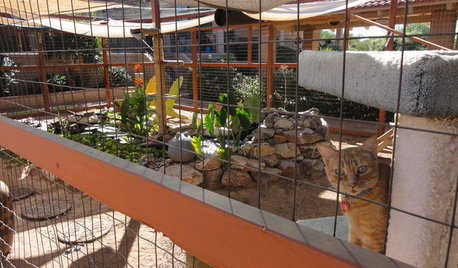coyotes in my neighborhood?
galileo
17 years ago
Related Stories

TREES7 Deer-Resistant Flowering Trees to Plant this Fall
If you live in a neighborhood with roaming deer, consider these beautiful trees that won't tempt hungry guests
Full Story
HOUZZ TOURSMy Houzz: 1930s Outside, Midcentury Modern Inside
Saarinen and Noguchi furnishings in a traditional home? A Dallas decorator went for it, with beautiful results
Full Story
EXTERIORSWhere Front Yards Collide: Property Lines in Pictures
Some could be twins; others channel the Odd Couple. You may never look at property boundaries the same way again
Full Story
GARDENING AND LANDSCAPINGRaise Backyard Chickens Without Ruffling Neighbors' Feathers
Before you build a coop in the backyard, follow these strategies to help keep your neighbors from squawking
Full Story
GARDENING AND LANDSCAPING10 Ideas for Decorating Your Summer Porch
Watch the world go by from a porch decked out with comfy furniture and inspiring accessories
Full Story
WINTER GARDENINGPruning Secrets for Exquisite Roses
Encourage gorgeous blooms year after year with this time-tested advice on how to prune your rosebush in winter for health and shape
Full Story
LANDSCAPE DESIGN4 Tips for Creating a Small Garden That Welcomes Wildlife
Win over birds, bees, butterflies and neighbors with these design strategies
Full Story
RANCH HOMESHouzz Tour: A Classic Ranch House Rises to the Location
A 1950s Hollywood Hills home with stunning L.A. views gets a thoughtful update
Full Story
HOUZZ TOURSMy Houzz: Cheerful, Eclectic Modern Beach House
Lively patterns, vivid colors and a spot for band practice jazz up a spacious beachfront home
Full Story
PETSSee a Deluxe 'Catio' Built for Feline Fun
Sixteen lucky cats get the run of a protected outdoor patio with ramps, steps and even a koi pond
Full Story




ginny12
spunky_MA_z6
Related Discussions
Coyotes have taken up residence in my yard
Q
Mountain Beaver
Q
Coyotes ate my chickens!!!
Q
Coyote melon/coyote gourd as a groundcover
Q
spunky_MA_z6
hostasz6a
ctlady_gw
paigect
Cady
barefootinct
Saypoint zone 6 CT
Saypoint zone 6 CT
diggingthedirt
galileoOriginal Author
Cady
diggingthedirt
martieinct
foxladye
prairiemoon2 z6b MA
patrick_nh
foxladye
chelone
Cady
siennact
ctlady_gw
chelone
Cady
Cady
siennact
ctlady_gw
paigect
chelone
malorn
siennact
narcnh
foxladye
diggingthedirt
foxladye